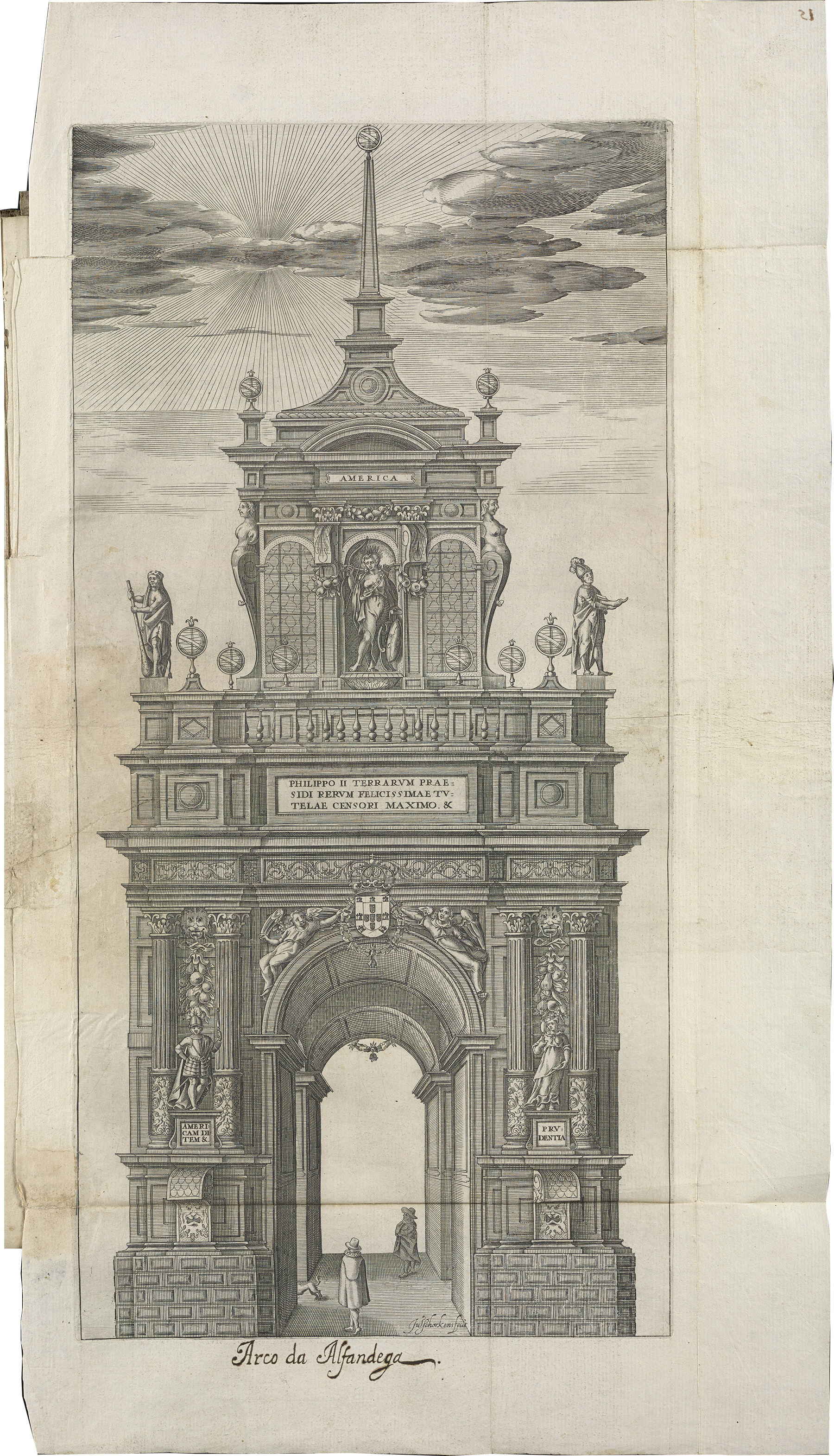he "Arch of Lisbon's Merchants" ("Arco dos homens de negócios") here depicted by the royal cartographer João Baptista de Lavanha (very probably, a Portuguese Converso) was the most impressive and luxurious manifestation to celebrate King Philip III's visit to Lisbon in 1619, as King Philip II of Portugal. The visit of the Habsburg Monarch aroused vivid expectations among Lisbon's "men of commerce" who were predominately Conversos. They hoped that the visit of the King would restore to the city its deserved role as the epicenter of the once-prosperous colonial trade in India. Decorated with classical, mythological themes and episodes of Iberian history (mostly Portuguese), the "arch of the men of commerce" explicitly celebrated King Manuel I past successful overseas enterprises. But this arch, I argue, also shared a theological-political implicit message: the need to revive King Manuel's integrative policies regarding the "ablest" and the "richest" among the Conversos. Portugal and its Habsburg King, were thereby called to fulfill the traditional role as protector and diffusor of Catholicism in the East with the help of Lisbon's prosperous businessmen. Claiming that, Conversos' "men of commerce" aimed to transform their negative image as suspected judaizers into useful and trustful subjects of the Crown, deserving to be promoted into the Old Christian elites.
Which exhibit?
Page: Featured item
Short name for this entry
The Arch
Order on exhibit page
8
Turn off the details link on the exhibit page
Off
